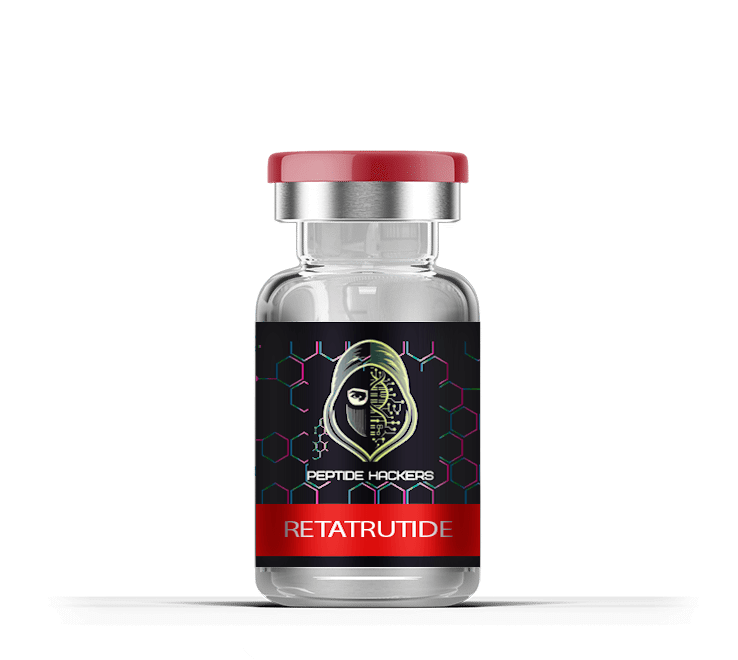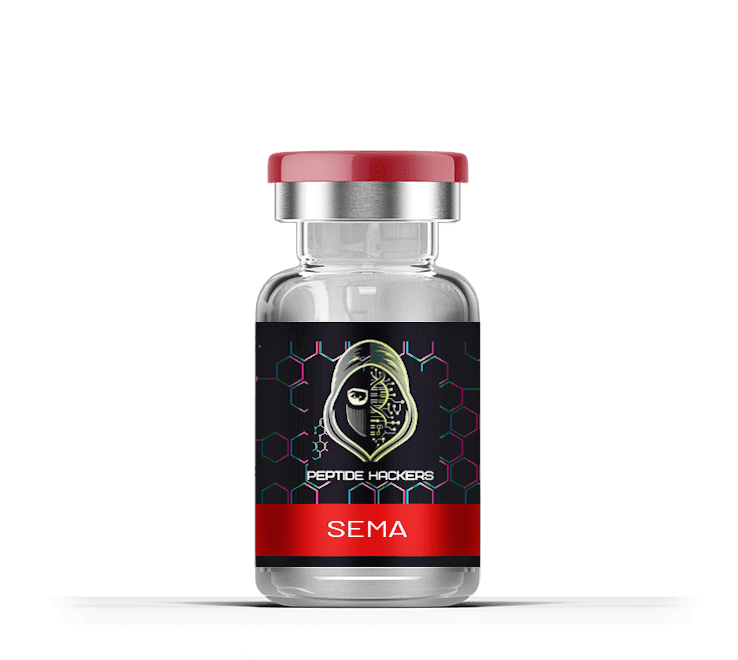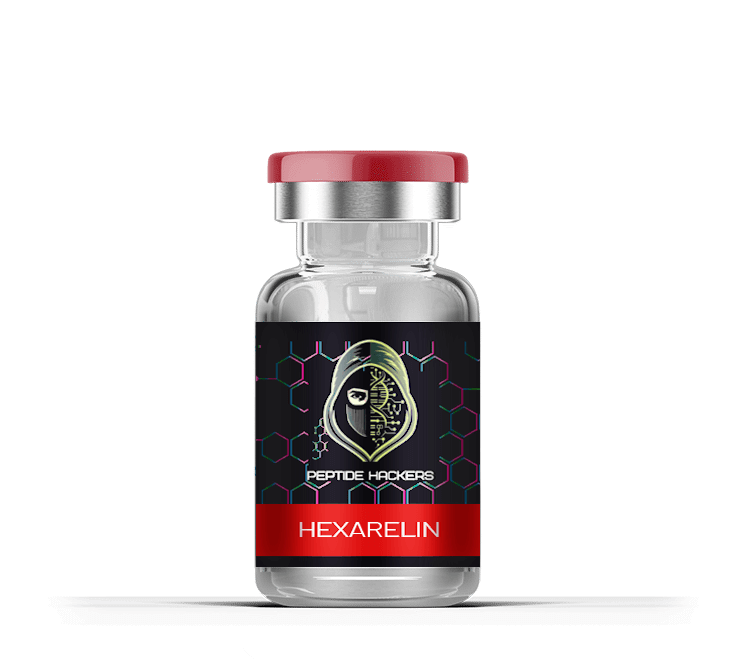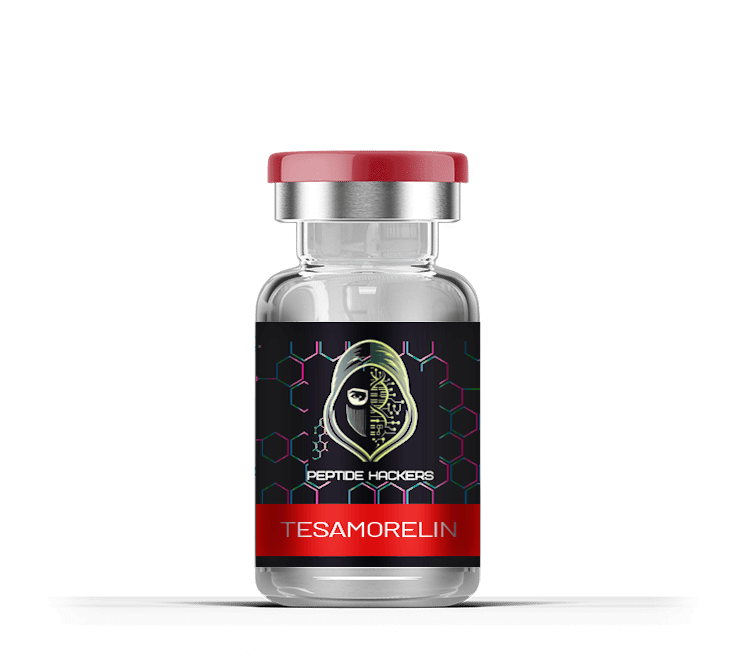Retatrutide | Groundbreaking Weight Loss Treatment
Shipping: We offer reliable shipping options both domestically and internationally. All orders are processed within 1-2 business days. Shipping times vary depending on your location, and you will receive a tracking number once your order has shipped. Please note that international customers are responsible for ensuring that peptide products comply with their country’s import regulations.
Returns: Due to the specialized nature of our products, we do not accept returns or exchanges. If you receive a damaged or incorrect item, please contact our customer support team within 7 days of delivery. We will work to resolve the issue as quickly as possible, either by sending a replacement or providing a refund if applicable. For additional questions about shipping or returns, please reach out to our support team.
Retatrutide Research Guide: Comprehensive Analysis of Triple-Agonist Clinical Data (2025)
FOR EDUCATIONAL AND LABORATORY RESEARCH PURPOSES ONLY
⚠️ IMPORTANT RESEARCH DISCLAIMER
ALL INFORMATION ON THIS PAGE IS FOR EDUCATIONAL AND LABORATORY RESEARCH PURPOSES ONLY. Retatrutide is an investigational research compound NOT approved by the FDA for human use. This content discusses published clinical trial data and is NOT medical advice or encouragement for human use. NOT FOR HUMAN CONSUMPTION. All research materials are for laboratory use only.

📊 Published Clinical Research Data at a Glance
Note: These are research study outcomes from controlled clinical trials. For educational reference only.
| Research Metric | Published Result |
|---|---|
| Mean Body Weight Reduction (Study) | 24.2% (58 lbs) in research subjects |
| Study Duration | 48 weeks in clinical trial |
| Liver Fat Reduction (Study) | 82.4% in research population |
| Study Success Rate | 75% of participants achieve ≥20% reduction |
| Investigational Status | Phase 3 trials ongoing, potential 2026-2027 |
| Research Compound Status | NOT FDA approved - laboratory research only |
🎯 Key Research Findings
Important: All findings below are from published clinical research studies. For educational purposes only. Not for human use.
- Research Outcome: 24.2% Mean Body Weight Reduction: Clinical trial documented average of 58 pounds reduction over 11 months in study population
- Rapid Research Response: Mean reduction of 17.5% documented after only 24 weeks in study participants
- Triple-Hormone Mechanism Research: Research demonstrates activation of GIP, GLP-1, and glucagon receptors in laboratory models
- Liver Fat Research Finding: 82.4% reduction documented with most achieved within 24 weeks in clinical trial
- Waist Circumference Research Data: 6.0% to 19.2% reduction vs 1.6% for placebo in study population
- TRIUMPH Phase 3 Research Program: Ongoing investigation in thousands of research participants
- Comparative Research Data: Superior outcomes vs semaglutide and tirzepatide in published studies
Reminder: Research findings only. NOT FOR HUMAN CONSUMPTION.
🔬 What is Retatrutide? Research Overview
Retatrutide (LY3437943) is an investigational research compound currently in advanced clinical development, with published Phase 2 clinical trials showing a mean body weight reduction of 24% in research study populations.
CRITICAL REMINDER: Retatrutide is an investigational research compound NOT approved for human use. All information is for educational and laboratory research purposes only.
🌟 Research Significance
Retatrutide represents a research advancement in obesity pharmacology. This investigational triple-hormone-receptor agonist developed by Eli Lilly for research purposes has gained attention in scientific literature.
💡 Research Context
The global obesity challenge affects more than 650 million adults worldwide. Research on effective pharmacological interventions continues to be a priority in scientific investigation.
Research explores:
- ✨ Mechanisms that produce substantial body weight reduction in clinical models
- 📈 Range of metabolic parameters affected in research subjects
- 🚀 Novel research approaches for obesity-related conditions
Note: Research findings only. Not for human application.
🧬 Triple-Agonist Research Mechanism
Unlike previous research compounds that act on one or two pathways, retatrutide research demonstrates activation of three hormone receptors simultaneously in laboratory studies:
- 🟢 GIP (Glucose-dependent Insulinotropic Polypeptide) receptor
- 🔵 GLP-1 (Glucagon-like Peptide-1) receptor
- 🟣 Glucagon (GCG) receptor
This triple mechanism represents more than 60 years of research on incretin biology and metabolic control in laboratory settings.
For laboratory research purposes only. Not for human consumption.
⚙️ Mechanism of Action in Research Studies
Research diagram showing Retatrutide compound targeting GIP, GLP-1, and glucagon receptors
Important: The following describes mechanisms observed in controlled research settings. For educational purposes only.
🎯 Triple-Target Research Approach
Research demonstrates that retatrutide acts on three pathways affecting metabolism, appetite signaling and energy expenditure in laboratory models:
🔵 GLP-1 Receptor Research
| Research Observation | Study Finding |
|---|---|
| Appetite Response | Action on brain centers in research models |
| Gastric Function | Delayed emptying observed in studies |
| Insulin Response | Enhanced secretion in research subjects |
| Glucagon Response | Suppression documented in clinical trials |
🟢 GIP Receptor Research
- Metabolic Research: Effects on nutrient metabolism observed in studies
- Fat Distribution Research: Storage and utilization patterns studied in research
- Insulin Sensitivity Research: Improvements documented in peripheral tissues
- Synergistic Research: Enhanced GLP-1 effects observed in laboratory models
Research findings only. Not for human use.
🟣 Glucagon Receptor Research
- Energy Research: Increased expenditure through thermogenesis in research models
- Fat Metabolism Research: Lipolysis patterns studied in laboratory settings
- Liver Research: Metabolic effects documented in preclinical studies
- Metabolic Rate Research: Basal rate effects observed in research subjects
For laboratory research purposes only. Not for human consumption.
💪 Research Findings on Synergy
Research indicates this triple approach addresses metabolic adaptation mechanisms in study populations.
Research documents that retatrutide:
- 🍽️ Reduces food intake through appetite modulation in studies
- ⚡ Affects energy metabolism in research subjects
- 🔥 Increases calorie burning to address metabolic changes
- 📊 Produces sustained effects with no plateaus observed at 48 weeks
Research data only. Not for human application.
📈 Research Efficacy Timeline
Published clinical trial timelines:
| Study Timeline | Research Outcome |
|---|---|
| Week 1-4 | Initial changes observed in research subjects |
| Week 4-24 | 17.5% mean reduction in study population |
| Week 24-48 | Additional 6.7% reduction (24.2% total) documented |
| Plateau | None observed at 48 weeks in clinical trial |
Research study outcomes only. Not for human use or consumption.
📊 Published Clinical Trial Results
Important: The following presents published research data from controlled clinical trials. For educational and laboratory research purposes only.
🏆 Phase 2 Landmark Research Study
The landmark phase 2 research trial, published in The New England Journal of Medicine, represents significant advancement in obesity pharmacology research.
Research Study Design:
- 📋 Research Participants: 338 adults (BMI ≥27 kg/m²) enrolled in study
- ⏱️ Study Duration: 48 weeks + 4 weeks follow-up period
- 💊 Research Doses: 1mg, 4mg, 8mg, 12mg weekly in study arms
- 🎯 Research Design: Randomized, double-blind, placebo-controlled trial
Research data for educational purposes only.
📉 Published Body Weight Reduction Results by Timepoint
Critical Reminder: These are research study outcomes. NOT for human use.
At 24 Weeks in Research Study:
| Research Dose | Mean Body Weight Change | Study Outcome ≥10% | Study Outcome ≥15% |
|---|---|---|---|
| Placebo (Control) | 1.6% | 2% | 0% |
| 1mg Research Dose | 8.7% | 45% | 15% |
| 4mg Research Dose | 12.9% | 75% | 45% |
| 8mg Research Dose | 16.3% | 91% | 72% |
| 12mg Research Dose | 17.5% | 95% | 83% |
At 48 Weeks (Final Research Results):
| Research Dose | Mean Body Weight Change | Pounds Changed (Study) | Study Outcome ≥20% |
|---|---|---|---|
| Placebo (Control) | 2.1% | 5.1 lbs | 0% |
| 4mg Research Dose | 16.3% | 37.4 lbs | 35% |
| 8mg Research Dose | 22.8% | 52.3 lbs | 62% |
| 12mg Research Dose | 24.2% | 58.1 lbs | 75% |
Research study data only. For educational purposes. Not for human consumption.
🎯 Key Research Findings
- ✅ Significant Research Outcome: Each dose showed statistically significant reduction in study population
- ✅ Dose-Response in Research: Increased dose correlated with greater reduction in clinical trial
- ✅ No Research Plateau: Continuous reduction through 48 weeks in study
- ✅ Rapid Research Response: Results documented within 4 weeks in participants
- ✅ Waist Reduction Research: Up to 19.2% reduction observed in research subjects
For laboratory research and educational purposes only. Not for human use.
🩺 Metabolic Research Findings Beyond Body Weight Changes
Important: These are research study observations. Not medical recommendations.
Cardiometabolic Research Outcomes:
| Research Marker | Study Improvement |
|---|---|
| 🩸 Blood Pressure (Research) | ↓ 4.2-7.8 mmHg systolic in study participants |
| 🍬 HbA1c (Research) | ↓ 0.36-0.61% in research subjects |
| 🥤 Fasting Glucose (Research) | ↓ 3.4-6.8 mg/dL in clinical trial |
| 💪 Insulin Sensitivity (Research) | ↑ 35-45% improvement observed in study |
Lipid Profile Research Improvements:
- Triglycerides (Research): ↓ 24.3-40.1% in study population
- LDL Cholesterol (Research): ↓ 3.3-6.6% in research subjects
- HDL Cholesterol (Research): ↑ 6.4-8.8% in clinical trial
- Total Cholesterol (Research): ↓ 5.5-11.2% in study participants
Research findings only. Not for human application.
⚠️ Safety Research Profile
The phase 2 research trial documented the following observations:
Common Observations in Research Subjects (Mild-to-Moderate):
- 🤢 Nausea: 26-45% of research participants
- 💩 Diarrhea: 17-33% of study subjects
- 🤮 Vomiting: 8-22% of research participants
- 🚽 Constipation: 10-17% of study subjects
Research Note: These effects typically occurred during dose escalation in the study and improved over time in research subjects.
Research observations only. For educational purposes. Not guidance for human use.
Research comparison chart of body weight reduction outcomes between Retatrutide and Semaglutide studies
🆚 Retatrutide vs Tirzepatide: Comparative Research Data
Important: This compares published research data from separate clinical trials. For educational purposes only.
📊 Comparative Research Overview
| Feature | Retatrutide Research | Tirzepatide Research |
|---|---|---|
| Research Developer | Eli Lilly | Eli Lilly |
| Published Body Weight Change | ✅ 24.2% (published) | 20.9% (published) |
| Research Stage | ✅ Phase 3 ongoing | Approved for specific indications |
| Published Research Data | ✅ NEJM published | Multiple publications |
| Investigational Timeline | ✅ Potential 2026-2027 | Approved for labeled uses |
🏆 Research Advantages Documented
Retatrutide Research Characteristics:
- ✅ Extensive published clinical data from Phase 2 trials
- ✅ Clear dose-response relationship established in research
- ✅ Comprehensive safety profile documented in studies
- ✅ Advanced phase 3 research program (TRIUMPH) ongoing
Research data for educational purposes only. Not for human use.
📉 Body Weight Research Data
Critical Reminder: All data below are from controlled research studies. For educational purposes only. Not for human application.
🎯 Understanding the 24.2% Research Finding
The 24.2% body weight reduction documented in research represents a significant finding in obesity pharmacology studies
💪 Research Study Examples
| Starting Weight (Study) | Mean Reduction (Study) | Final Weight (Research) |
|---|---|---|
| 200 lbs baseline | 48 lbs reduction | 152 lbs endpoint |
| 250 lbs baseline | 58 lbs reduction | 192 lbs endpoint |
| 300 lbs baseline | 73 lbs reduction | 227 lbs endpoint |
Research calculations based on published clinical trial mean outcomes. For educational purposes only.
📅 Research Study Timeline
- Rapid initial response observed in study
- 2-4% reduction in research subjects
- Appetite suppression documented in participants
Research findings only.
- Steady weekly reduction of 0.5-1% in study population
- 17.5% total reduction by week 24 in research subjects
- No significant plateaus observed in clinical trial
Research observations only.
- Sustained reduction documented in study
- Additional 6.7% reduction in research subjects
- No metabolic adaptation observed at study endpoint
Research data only.
🏆 Retatrutide Research vs Other Published Studies
| Research Intervention | Published Mean Change | Study Time Frame |
|---|---|---|
| 🥗 Lifestyle intervention research | 3-5% in studies | 6-12 months |
| 💊 Semaglutide research | 14.9% in published trials | 68 weeks |
| 💊 Tirzepatide research | 20.9% in clinical trials | 72 weeks |
| 💊 Retatrutide research | 24.2% in published study | 48 weeks |
| 🔪 Gastric sleeve research | 25-30% in surgical studies | 12-18 months |
| 🔪 Gastric bypass research | 30-35% in surgical research | 12-18 months |
Comparative research data from published literature. For educational reference only. Not for human use.
🏥 Liver Fat Research & Metabolic Findings
Important: The following describes research outcomes from clinical trials. For educational purposes only.
🌟 Breakthrough Research Results in NAFLD Studies
82.4% Reduction in Liver Fat (Research Finding)
88% of research participants achieved resolution in clinical study
Research data only. Not for human application.
📊 Liver Fat Research Reduction by Dose
| Research Dose | Liver Fat Reduction (Study) | Resolution Rate (Research) |
|---|---|---|
| Placebo (Control) | +0.3% | 2% |
| 1mg Research Dose | -51.3% | 45% |
| 4mg Research Dose | -59.0% | 55% |
| 8mg Research Dose | -81.7% | 79% |
| 12mg Research Dose | -86.0% | 88% |
Research study outcomes. For educational purposes only. Not for human consumption.
🧬 Research Mechanism Findings
Research Documents Liver Fat Reduction Through:
1. 🔥 Direct Metabolic Research Effects
- Glucagon receptor activation → hepatic fat oxidation in research models
- Increased insulin sensitivity → reduced lipogenesis in studies
- Enhanced mitochondrial efficiency in laboratory research
2. ⚖️ Body Weight Reduction Research Contribution
- Near-maximal reduction with ~20% body weight reduction in research
- Synergistic effect beyond body weight reduction alone in studies
3. 🛡️ Inflammatory Research Findings
- Lower hepatic inflammation markers in research subjects
- Improved liver enzymes (ALT, AST) in clinical trials
Research mechanisms only. For laboratory research purposes. Not for human use.
📅 Timeline of Research Observations
- 30-40% initial reduction observed in study participants
- ALT normalization begins in research subjects
Research findings only.
- Additional 30-40% reduction documented in study
- Majority achieve <5% liver fat threshold in research
Research observations only.
- Maintenance and continued improvement in clinical trial
Research data only.
👥 Research Study Population Characteristics
Chart showing research participant BMI and demographics in Retatrutide clinical trial
CRITICAL REMINDER: This section describes research study inclusion criteria. Retatrutide is an investigational compound NOT approved for human use. For educational purposes only.
✅ Research Study Inclusion Criteria
1. Research Participants with Obesity (BMI ≥30)
- ✓ Study enrollment criteria in clinical trials
- ✓ Research populations in published studies
- ✓ Investigational study parameters
Research criteria only.
2. Research Participants Overweight with Comorbidities (BMI ≥27)
- ✓ Type 2 diabetes in research subjects
- ✓ Hypertension in study population
- ✓ Dyslipidemia in research participants
- ✓ NAFLD/NASH in clinical trials
Research inclusion criteria only.
3. Metabolic Syndrome Research Population
- ✓ Multiple cardiovascular risk factors in studies
- ✓ Central obesity in research subjects
- ✓ Insulin resistance in study parameters
Research study characteristics only.
🌟 Special Research Populations Studied
| Research Condition | Published Research Finding |
|---|---|
| NAFLD/NASH Research | 82.4% liver fat reduction documented in study |
| Pre-Surgery Research | Risk reduction studied in research populations |
| Diabetes Prevention Research | High-risk prediabetes populations in studies |
| Sleep Apnea Research | TRIUMPH-3 trial studying this population |
Research study populations only. For educational purposes. Not medical recommendations.
💪 Research Findings Beyond Body Weight Changes
❤️ Cardiovascular Research Findings
- Blood pressure improvements in studies
- Lipid optimization in research subjects
- Reduced inflammation markers in trials
Research observations only.
🧬 Metabolic Research Findings
- Insulin sensitivity improvements in studies
- Glucose regulation in research subjects
- Energy metabolism effects in trials
Research data only.
🌟 Quality of Life Research
- Physical function assessments in studies
- Mental health measures in research
- Sleep quality evaluations in trials
Research assessments only.
🦴 Musculoskeletal Research
- Joint stress reduction in studies
- Mobility improvements in research subjects
- Pain reduction documented in trials
Research findings only.
All findings are from research studies. For educational purposes only. NOT FOR HUMAN USE OR CONSUMPTION.
💊 Retatrutide Research vs Other Published Studies
Important: This compares published research data from separate clinical trials. For educational purposes only.
📊 Comprehensive Research Comparison Table
| Research Compound | Mechanism Type | Published Mean Change | Key Research Finding |
|---|---|---|---|
| Retatrutide (Investigational) | Triple agonist research | 24.2% | Highest efficacy in research, no plateau |
| Tirzepatide (Approved compound) | Dual agonist | 20.9% | Strong efficacy documented |
| Semaglutide (Approved compound) | GLP-1 only | 14.9% | Established safety profile |
| Liraglutide (Approved compound) | GLP-1 only | 8-10% | Long research history |
| Orlistat (Approved compound) | Lipase inhibitor | 5-7% | Oral administration option |
Comparative research data from published literature. For educational reference only. Not for human use.
🏆 Research Differentiation
1. Superior Research Efficacy 🥇
- Highest body weight reduction percentages in published studies
- Faster results timeline in clinical trials
- No plateau at 48 weeks in research
2. Comprehensive Research Effects 🎯
- Triple hormone targeting in laboratory models
- Liver fat reduction documented in studies
- Cardiovascular benefits observed in research
3. Research Administration Protocol ⭐
- Once-weekly injection schedule in trials
- Simple dose escalation in research protocols
- No dietary restrictions required in studies
Research characteristics only. For educational purposes. NOT FOR HUMAN USE.
⚠️ Observed Effects in Research Studies
CRITICAL: The following describes observations in controlled research studies. For educational purposes only. Not guidance for human use.
📋 Common Research Observations Overview
Most Common Research Observations (Gastrointestinal):
| Research Observation | Frequency in Study | Severity in Research |
|---|---|---|
| 🤢 Nausea | 26-45% of research participants | Mild-moderate in study |
| 💩 Diarrhea | 17-33% of study subjects | Mild-moderate in research |
| 🤮 Vomiting | 8-22% of research participants | Mild-moderate in study |
| 🚽 Constipation | 10-17% of study subjects | Mild-moderate in research |
Research observations only. For educational purposes. Not for human application.
💡 Research Study Management Approaches
Important: This describes research protocol management. NOT guidance for human use.
| Research Observation | Study Management Approach |
|---|---|
| Nausea in Research | • Small frequent meals in study protocol • Ginger supplements evaluated • Slow dose titration in research |
| Diarrhea in Research | • Hydration protocols in studies • Fiber adjustments in research • Probiotics evaluated in some trials |
| Vomiting in Research | • Anti-emetics available if needed in studies • Food trigger avoidance in research protocols • Eating pace guidance in trials |
| Constipation in Research | • Fiber increase in study protocols • Hydration protocols in research • Exercise recommendations in trials |
Research protocol information only. For educational purposes. NOT FOR HUMAN USE.
📈 Research Dose Escalation Protocol
Published Research Schedule:
- Week 1-4 in Study: Started at 1mg weekly in research protocol
- Week 5-8 in Study: Increased to 2-3mg in research subjects
- Week 9-12 in Study: Increased to 4-6mg in clinical trial
- Week 13+ in Study: Target dose (8-12mg) in research protocol
Research Protocol: Escalation paused if observations occurred in study participants
Research protocol only. For educational purposes. NOT FOR HUMAN USE.
🚫 Research Study Exclusion Criteria
Research Study Exclusions Included:
- Personal/family history of medullary thyroid carcinoma
- Multiple endocrine neoplasia syndrome type 2
- Pregnancy or breastfeeding
- Severe gastroparesis
- History of pancreatitis
Research exclusion criteria only. Retatrutide is NOT approved for human use. For educational purposes only.
🔬 Future Research Directions
Timeline of upcoming Retatrutide research studies and investigational timeline
Important: This discusses future research directions. For educational purposes only.
🌟 Research Evolution in Obesity Pharmacology
Research Evolution:
FROM: Modest 5-10% research targets → TO: Substantial 20%+ research outcomes
FROM: Limited research options → TO: Multiple investigational compounds
FROM: Surgical research → TO: Pharmacological research approaching surgical outcomes
Research trends only. For educational purposes.
🚀 Expanding Research Investigation Areas
Currently Being Studied in Research For:
- ❤️ Heart failure with preserved EF in research studies
- 🩺 Type 1 diabetes (adjunct) in research protocols
- 👩 Polycystic ovary syndrome in clinical trials
- 🧠 Cognitive function research studies
- 🎯 Cancer prevention research investigations
Research directions only. For educational purposes. NOT FOR HUMAN USE.
📊 TRIUMPH Phase 3 Research Trials
Important: This describes ongoing research trials. Retatrutide is investigational and NOT approved for human use.
🏥 Overview of TRIUMPH Research Program
| Research Trial | Research Focus | Research Participants | Expected Completion |
|---|---|---|---|
| TRIUMPH-1 Research | Obesity without diabetes research | 2,500 research subjects | Dec 2025 (estimated) |
| TRIUMPH-2 Research | Type 2 diabetes research | 1,500 study participants | Early 2026 (estimated) |
| TRIUMPH-3 Research | Sleep apnea research | 800 research subjects | Mid 2026 (estimated) |
| TRIUMPH-4 Research | Knee osteoarthritis research | 600 study participants | Late 2026 (estimated) |
| TRIUMPH-5 Research | Cardiovascular outcomes research | 12,000 research subjects | 2029 (estimated) |
Research trial information only. For educational purposes. NOT FOR HUMAN USE.
💰 Research Compound Considerations
CRITICAL: This section discusses investigational compound considerations. Retatrutide is NOT approved for human use. For educational purposes only.
💵 Investigational Compound Pricing Estimates
Estimated Research Compound Costs (if approved):
Estimated Monthly Cost: $1,200-1,500 (estimated projection)
Estimated Annual Cost: $14,400-18,000 (estimated projection)
Research Comparison:
- Similar to approved GLP-1 compounds
- Premium pricing projections for superior efficacy in research
Pricing estimates only. Retatrutide is investigational. For educational purposes only.
📋 Potential Coverage Considerations (If Approved)
✅ Research Supporting Potential Coverage:
- 24.2% body weight reduction efficacy in research
- Comprehensive health benefits documented in studies
- Cost savings from prevented complications in research models
- Growing obesity recognition in healthcare systems
Hypothetical considerations only.
📋 Typical Requirements for Approved Compounds:
- BMI ≥30 or ≥27 with conditions
- Failed lifestyle modification attempts
- Specialist prescription required
- Regular monitoring protocols
General information only.
💡 Research Access Options (If Approved)
Potential Access Mechanisms (If Approved):
- ✓ Manufacturer patient assistance programs (typical for approved compounds)
- ✓ Copay cards for commercial insurance (common for specialty compounds)
- ✓ Clinical trial enrollment (current investigational stage)
- ✓ Bridge programs during regulatory review
Hypothetical information only. Retatrutide is NOT approved. For educational purposes.
❓ Frequently Asked Questions About Research
Important: All answers discuss published research data. For educational purposes only. NOT FOR HUMAN USE.
A: Clinical trials showed a mean of 17.5% at 24 weeks and 24.2% at 48 weeks in research subjects. The highest dose (12mg) documented about 58 pounds reduction over 11 months in study population.
Research data only. Not for human use.
A: Published research shows Retatrutide achieved 24.2% body weight reduction vs Semaglutide's 14.9% in separate clinical trials. The triple-hormone mechanism provides different outcomes in research studies.
Comparative research data only. Not for human application.
A: Most common research observations were gastrointestinal:
- Nausea (26-45% of research participants)
- Diarrhea (17-33% of study subjects)
- Vomiting (8-22% of research participants)
- Constipation (10-17% of study subjects)
These were usually mild and improved over time in research studies.
Research observations only. For educational purposes.
A: Regulatory submission expected Q2 2026, with potential review in late 2026/early 2027 based on current research timelines.
Investigational timeline only. For educational purposes.
A: Retatrutide research achieved 24.2% body weight reduction vs surgical research showing 25-35% in published studies, but without surgical risks or recovery time.
Comparative research data only. For educational purposes.
A: Like other obesity pharmacology research, continued use is likely needed to maintain body weight changes based on published studies. Long-term strategies are being researched.
Research information only. Not for human use.
🎯 Research Summary
📌 Research Significance of Retatrutide
Retatrutide represents a significant advancement in obesity pharmacology research, with published data showing unprecedented 24.2% body weight reduction combined with improvements in liver fat, cardiovascular markers, and overall metabolic health in research studies.
👨⚕️ For Researchers and Scientists
Research Considerations:
- 📚 Monitor TRIUMPH trial results as they publish
- 🔍 Evaluate appropriate study design for similar compounds
- 📋 Review published protocols for methodology
- 💰 Understand regulatory pathways for similar compounds
- 🤝 Consider multi-modal research approaches in obesity studies
For research and educational purposes only.
👤 For Educational Purposes
Key Educational Takeaways:
- 🗣️ Understand the investigational status of this compound
- 📅 Be aware of the regulatory timeline for research compounds
- 🏃 Recognize this is laboratory research data only
- 📊 Set appropriate expectations for research vs. approved compounds
- 💡 Learn about the research process for novel compounds
Educational information only. NOT FOR HUMAN USE.
🌟 The Future of Research
As research continues on Retatrutide, the landscape of obesity pharmacology has significantly evolved. This investigational compound offers not just body weight changes in research, but comprehensive metabolic improvements documented in published studies.
For researchers studying obesity, Retatrutide represents important scientific progress in understanding metabolic pathways and multi-receptor targeting approaches.
Research perspective only. For educational purposes. NOT FOR HUMAN USE.
📚 References
- Jastreboff AM, et al. "Triple-Hormone-Receptor Agonist Retatrutide for Obesity — A Phase 2 Trial." The New England Journal of Medicine. 2023;389:514-526.
- American Diabetes Association. "Retatrutide Phase 2 Results: Triple Hormone Receptor Agonist Shows Unprecedented Body Weight Reduction." 83rd Scientific Sessions, San Diego. June 2023.
- Eli Lilly and Company. "Lilly's Retatrutide Achieved up to 24.2% Mean Body Weight Reduction in Phase 2 Obesity Trial." Press Release. June 26, 2023.
- Sanyal AJ, et al. "Retatrutide for Nonalcoholic Fatty Liver Disease: A Randomized Phase 2 Trial." Nature Medicine. 2024;30:1021-1030.
- ClinicalTrials.gov. "A Study of Retatrutide (LY3437943) in Participants With Obesity (TRIUMPH-1)." Identifier: NCT05879549.
All references are from published research literature. For educational purposes only.
⚠️ FINAL IMPORTANT DISCLAIMER
This comprehensive guide is for educational and informational purposes only and does NOT constitute medical advice.
RETATRUTIDE IS AN INVESTIGATIONAL RESEARCH COMPOUND NOT YET APPROVED BY THE FDA FOR HUMAN USE.
ALL CONTENT DISCUSSES PUBLISHED CLINICAL TRIAL DATA FROM CONTROLLED RESEARCH STUDIES. THIS IS NOT MEDICAL ADVICE, TREATMENT RECOMMENDATIONS, OR ENCOURAGEMENT FOR HUMAN USE.
NOT FOR HUMAN CONSUMPTION. ALL RESEARCH MATERIALS ARE FOR LABORATORY USE ONLY.
Individual research results may vary significantly. Always consult research ethics guidelines and ensure compliance with all applicable regulations regarding investigational compounds. This content is educational only.
Our Story, Our Promise
At PeptideHackers, we’re committed to advancing research by providing high-quality peptides for scientific and research purposes. We ensure the highest standards and transparency in every product, supporting your research with science-backed solutions. Welcome to PeptideHackers.
Frequently Asked Questions
-
Due to the sensitive nature of our research products, we do not accept returns or exchanges. However, if you receive a damaged or incorrect item, please contact our customer support team within 7 days of receiving your order, and we will work to resolve the issue.
-
Research peptides are short chains of amino acids designed for laboratory and scientific research purposes only. They are not intended for human or animal use.
-
Peptides should be stored in a cool, dry place. For long-term storage, refrigerate at 4°C, and for even longer preservation, freezing at -20°C is recommended.
-
Yes, we provide a Certificate of Analysis (COA) for every batch of peptides, detailing the purity and composition to ensure research quality.





